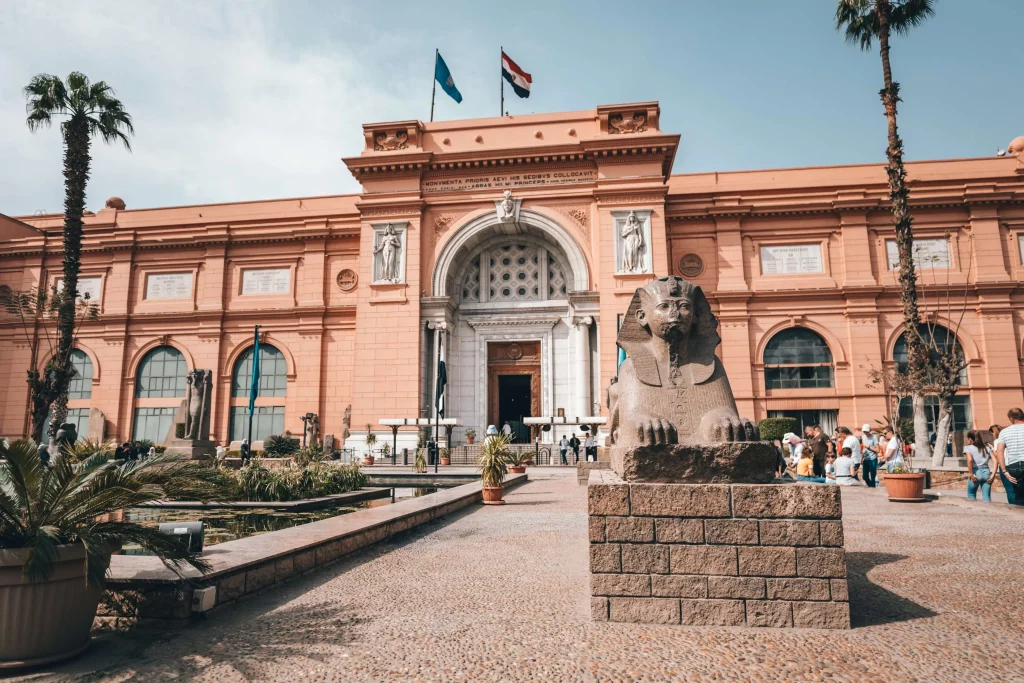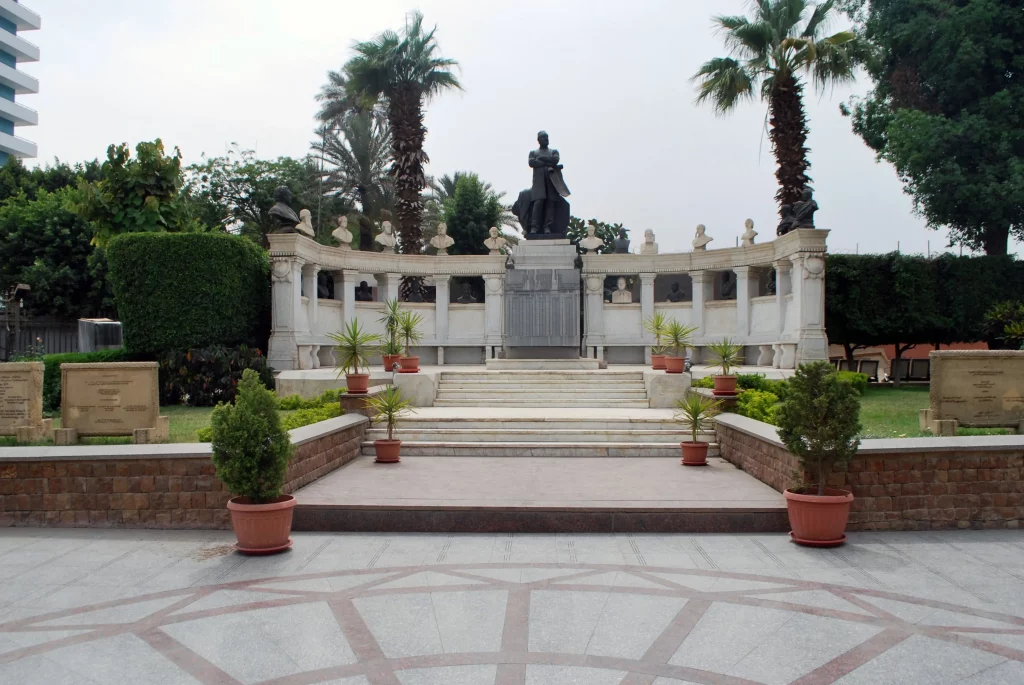Menu
Facebook-f
Twitter
Youtube
Instagram
Hertz Egypt > Blog
Tahrir Square is home to the greatest collection of Ancient Egyptian artefacts in the world. Though the Egyptian Museum is showing its age, a visit here remains one of the highlights of a trip to Egypt. It also serves as an ideal introduction to Ancient Egypt.
Tackling the museum
Since the museum contains more than a quarter of a million objects spanning over three millennia from the Old Kingdom to the Roman period, it would take at least nine months to see everything, and only if allowing a minute or less at each exhibit. That calculation doesn’t include the vast number of artefacts languishing in the museum’s basement. Some of the larger statues have reputedly sunk through the floor, earning the museum the ironic title of ‘Egypt’s last major excavation’. Cataloguing is now, however, under way.
The ground floor is generally arranged chronologically (clockwise from the entrance hall), while exhibits on the first floor are grouped thematically. Tutankhamun’s famous rooms are located on the first floor, as are the royal mummies and jewellery rooms. For more on Tutankhamun’s treasures, read here.
The museum is ideally visited twice: once with a guide to point out the highlights (all contained in the main halls), and a second time alone wandering some of the side rooms, which give fascinating glimpses into the daily lives of the Ancient Egyptians. If you don’t want a guide (LE50 per hour is the official rate; guiding standards are variable), it’s easy to spot the highlights from the crowds of people around them.

The following lists the museum’s top 20 highlights, as selected for Insight Guides by Professor Dr Zahi Hawass, Secretary General of Egypt’s Supreme Council of Antiquities.
• Colossal statue of Akhenaten (GF room 3)
• Statue of Rameses II as a child with the Levantine sun-
god Hauron (GF room 10)
• Bust of Thutmose III (GF room 12)
• Statue of Meritamun II (GF room 15)
• Copper statue of Pepy I or his son Merenra (GF room 31)
• Statuette of dwarf Seneb and his family (GF room 32)
• Four statues of Intyshedu (GF room 32)
• Sheikh el-Balad (GF room 42)
• Statue of Khafra (GF room 42)
• Statue of the dwarf Perniankhu (GF room 42)
GF = Ground Floor; UF = Upper Floor.
• Narmer Palette (GF room 43)
• Statue of Kai (GF room 46)
• Three triads of Menkaura (GF room 47)
• Statue of Djoser (GF room 48)
• Golden mask of Psusennes I (UF room 2)
• Golden mask of Tutankhamun (UF room 3)
• Portrait of two brothers from the Fayoum (UF room 14)
• Golden throne of Tutankhamun (UF room 35)
• Innermost coffin of Yuya (UF room 43)
• Mummy of Hatshepsut (UF room 56)

Before you leave the museum, check out the tomb of the French Egyptologist Auguste Mariette (1821–81), in the eastern end of the garden. Above him are the busts of eminent Egyptologists including a rather grumpy-looking Champollion, who used the Rosetta Stone (a copy of London’s original is found in the museum, diagonally opposite the entrance; it is the museum’s only non-original artefact) to decipher hieroglyphs for the first time.
Customer support
© 2022 The Hertz Corporation – All Rights Reserved. Terms & Conditions